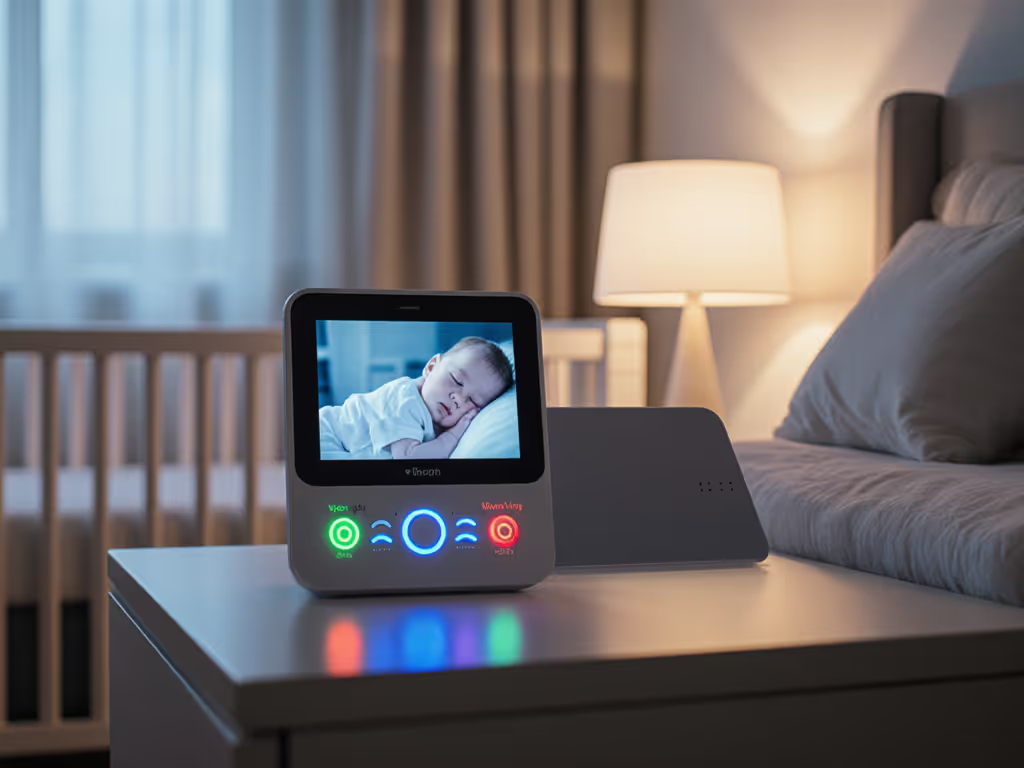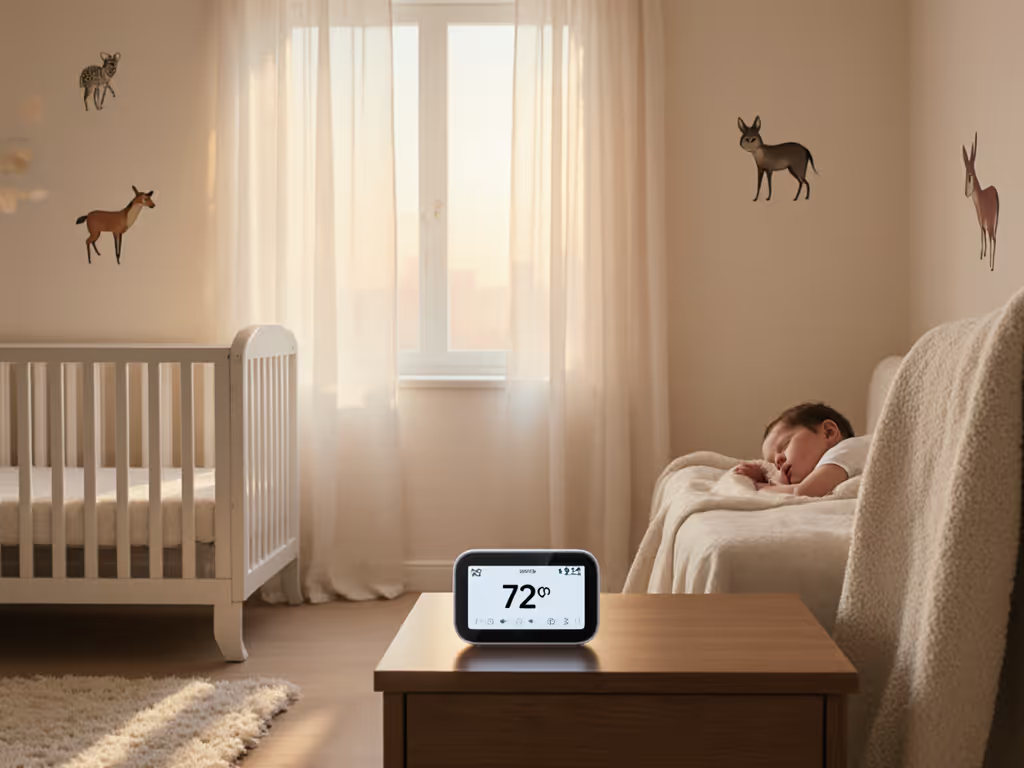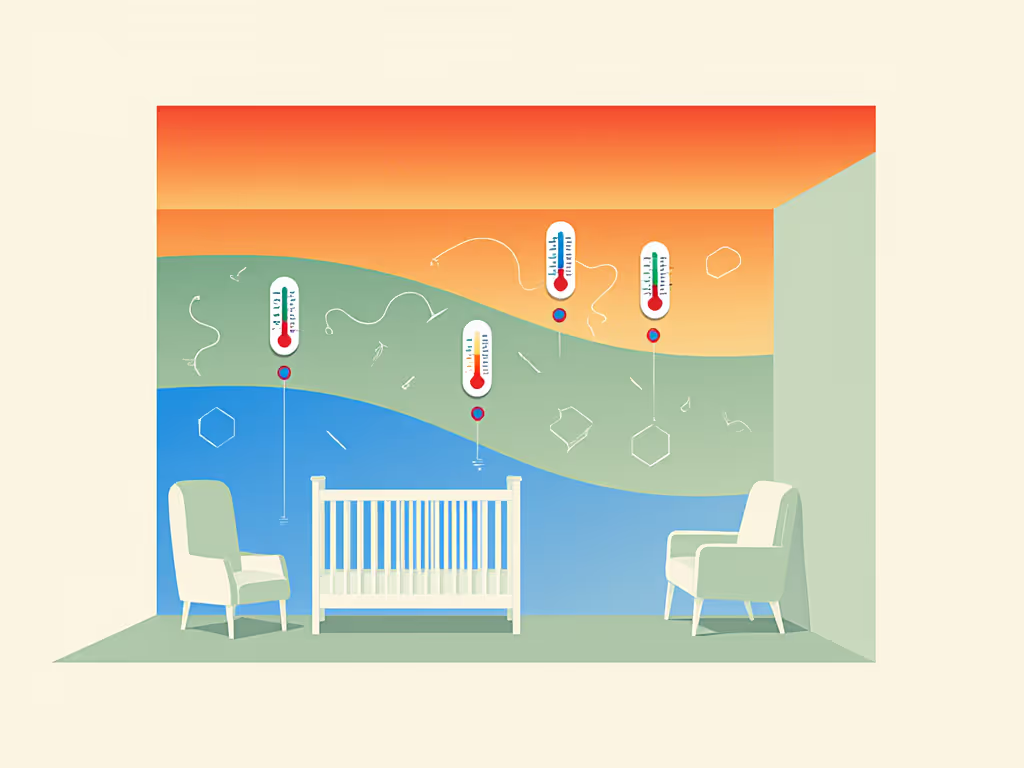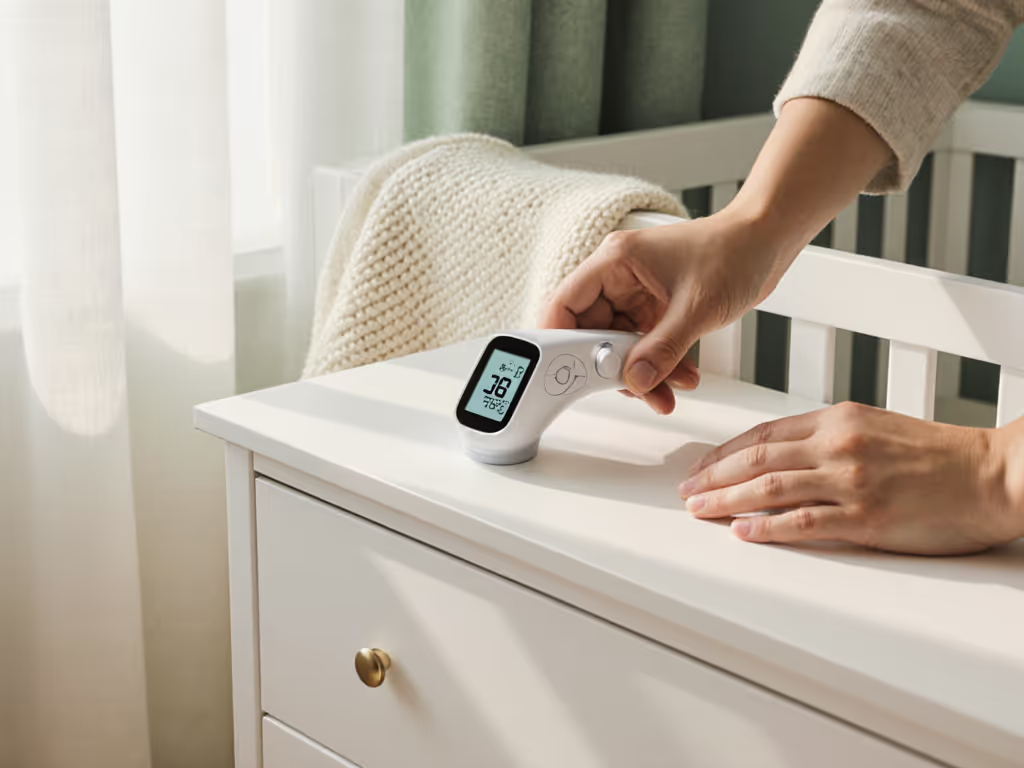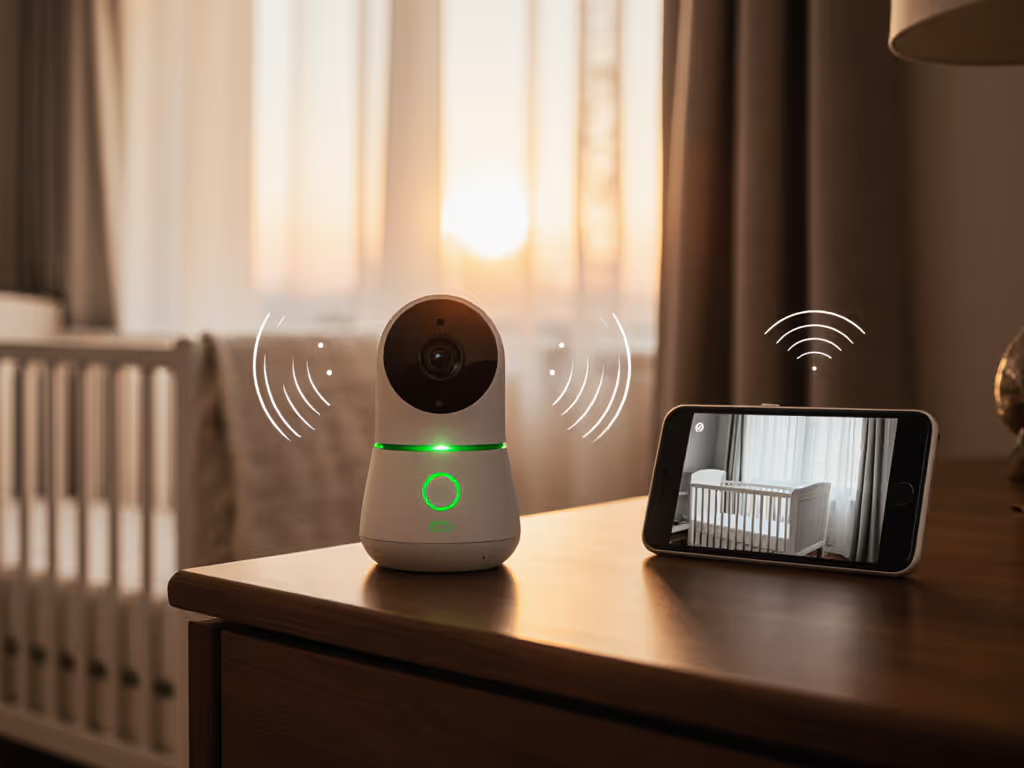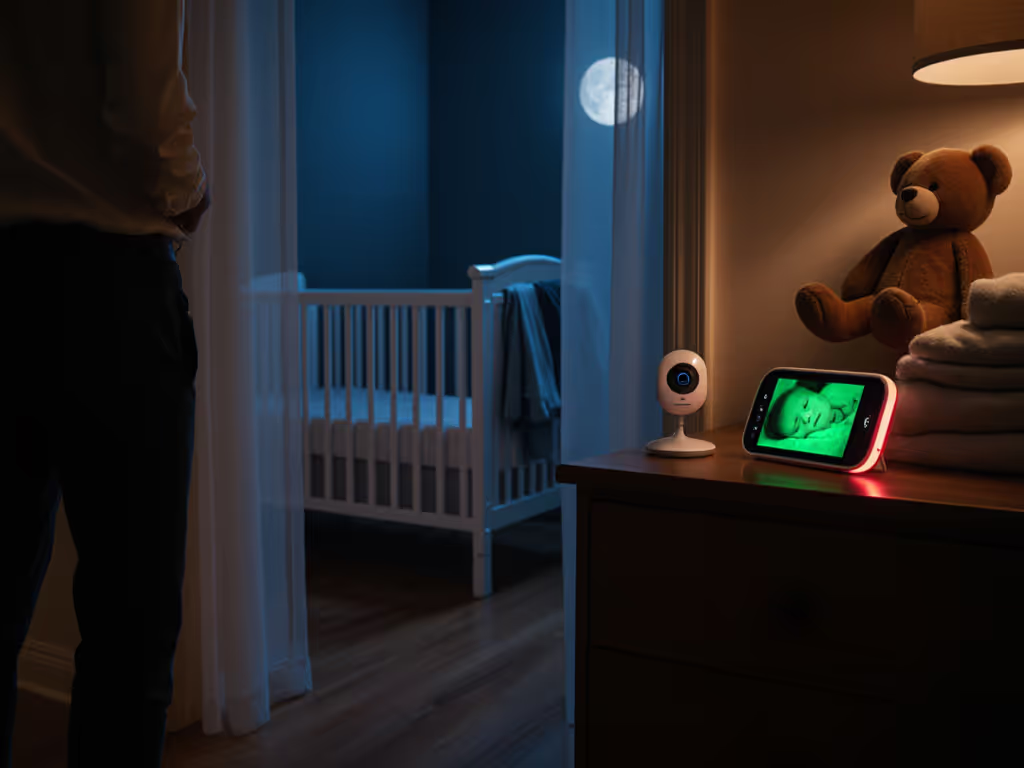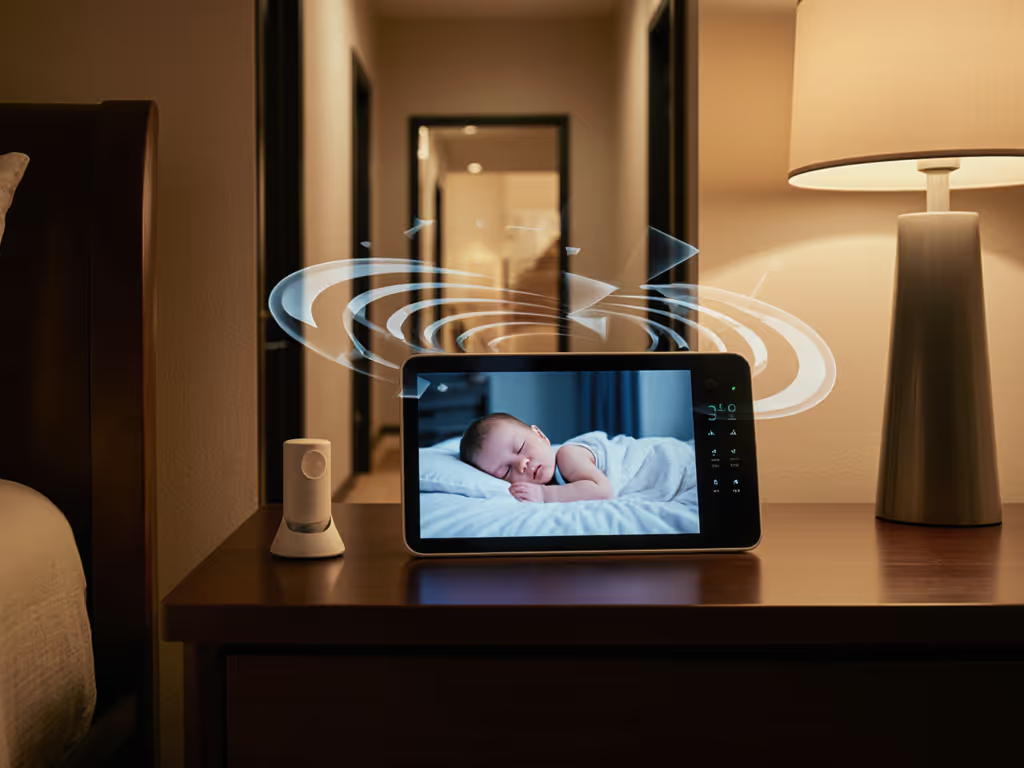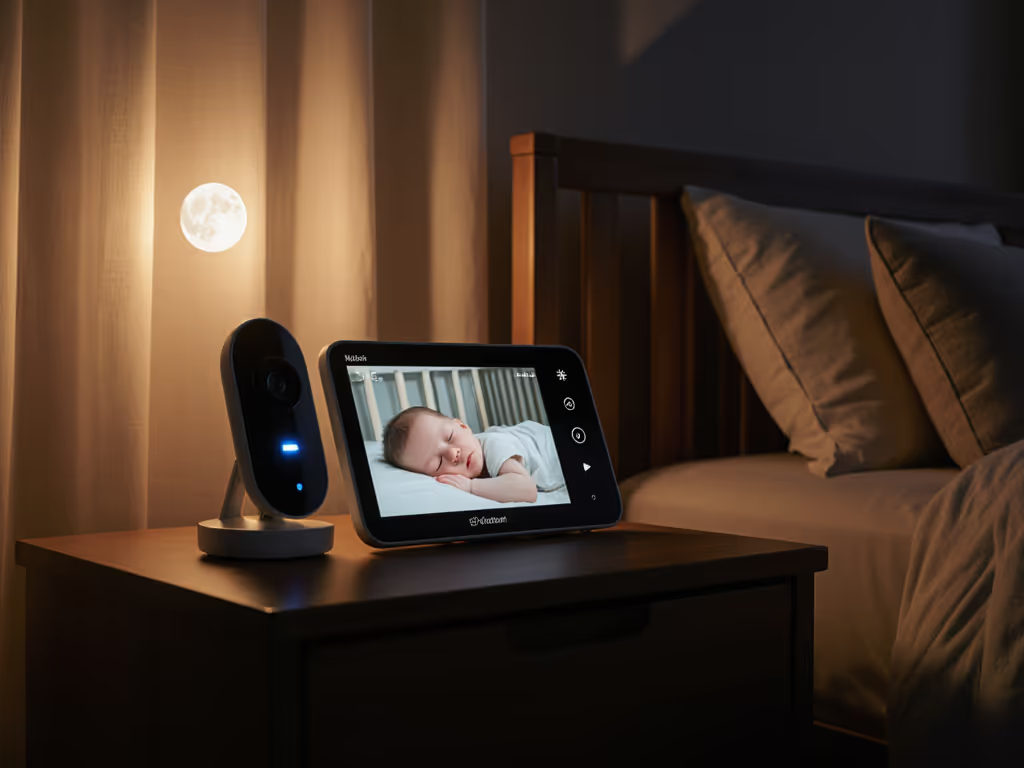As a parent, you instinctively check your room temperature monitor when baby seems restless, only to find conflicting readings that spike anxiety. Yet few stop to ask why these devices mislead us, or how nursery humidity monitoring fits into infant safety. I've audited dozens of monitors and consistently find that temperature accuracy isn't just about hardware; it's about understanding your home's data flows and your device's threat model. If it phones home, it needs a very good reason. Let's cut through marketing claims with plain-language crypto for your nursery environment. If you're still deciding what features actually matter, see our must-have baby monitor features guide.
Why Your Room Temperature Monitor Lies (And It's Not Your Fault)
How Baby Monitors Measure Temperature: The Thermistor Trade-Off
Most baby monitors embed NTC (Negative Temperature Coefficient) thermistors (tiny, cheap sensors that change resistance as temperature shifts). While practical for mass production, they carry inherent limitations:
- Accuracy range: Typically ±0.5°C to ±2.0°C (vs. ±0.1°C in dedicated thermometers)
- Narrow calibration: Optimized for 15°C-35°C, losing precision at extremes
- Self-heating interference: The monitor's own circuitry generates heat, artificially inflating readings by 1-2°C
I once documented a "secure" monitor consistently reporting 23°C in a nursery actually at 21°C, verified by an independent sensor. The culprit? Placement against a plaster wall (a known insulator) combined with the camera's internal processor heat. This isn't a defect; it's physics that marketing glosses over.
Placement Physics: Why Location Trumps Specs
Your monitor's location creates blind spots no firmware update can fix:
- Height errors: Hot air rises. A ceiling-mounted camera reads 1-3°C warmer than crib-level air
- Environmental sabotage: Vents, windows, or radiators create microclimates that misrepresent the room
- Wall material impact: Brick/plaster walls retain heat differently than drywall, affecting localized readings
Consider this data flow diagram:
[External Heat Source] → [Air Currents] → [Monitor Sensor] → [Displayed Value]
↑ ↑
[Self-Heating Camera] [Wall Material Insulation]
Until you account for all these inputs, your reading is a guess, not data.
Health Implications: When Inaccuracy Becomes Risk
The Critical Link Between Temperature and Infant Safety
Pediatric studies confirm that actual ambient temperature, not what your monitor claims, directly impacts:
- SIDS risk: A 2023 meta-analysis found 24°C+ environments correlate with 30% higher incidence
- Sleep quality: Overheating disrupts sleep cycles (verified via motion tracking in local-only monitors)
- Respiratory stress: Low humidity (<30%) dries airways, exacerbating cold symptoms
Crucially, the ideal nursery range (18°C-21°C) has little margin for error. A monitor reading 19°C that actually measures 22°C due to placement errors places baby in the danger zone.
Interpreting Environmental Data: Beyond the Number
Stop treating your monitor's display as truth. Employ threat-modeling discipline:
- Cross-verify: Place a $15 standalone thermometer at crib level (not near the monitor)
- Check patterns: Does the reading spike when the camera activates? That's self-heating
- Monitor behavior: Reddened skin or sweaty necks override any sensor (per Red Nose Australia guidelines)
This is why I prioritize devices with local-only display options. To understand the trade-offs, compare WiFi vs non-WiFi baby monitors. No network means fewer failure points and no hidden data flows skewing your perception of reality.
Hardening Your Nursery Environment: A Stepwise Checklist
Firmware and Placement Policy Checks
Before trusting any reading, execute these steps: For camera positioning, airflow, and cable safety, follow our baby monitor setup and placement guide.
- Reset factory placement biases: Move the monitor away from walls/vents per manual, then reposition after verifying with independent thermometer
- Disable cloud telemetry: If your device transmits humidity data, demand proof of E2EE or disable it (this isn't targeted advertising data)
- Cycle test: Record readings hourly with/without camera active to isolate self-heating effects
Minimize attack surface, maximize environmental confidence. Your home's data shouldn't leak to debug a sensor flaw.
Interpreting Sensor Calibration: The Realistic Expectation Guide
| Action | Effect | Trade-Off |
|---|
| Mounting monitor at crib height | Reduces height error | Sacrifices viewing angle |
| Using dual sensors (monitor + standalone) | Eliminates single-point failure | Adds visual clutter |
| Choosing monitors without mandatory cloud | Ensures local data ownership | Loses remote access |
Accept that no consumer device achieves lab-grade accuracy. Instead, build resilience through redundancy and verification, not faith in a single reading.
Why Privacy Matters More Than You Think
That "inaccurate" temperature reading might be the least of your worries. Many monitors transmitting nursery humidity data also leak:
- Timestamped activity patterns (e.g., 3 a.m. feedings)
- Device IDs revealing model/firmware versions
- Signal strength indicating room layout
While testing a "privacy-focused" monitor, I captured metadata packets leaving the home network at 3 a.m., all while the camera was idle. The parents weren't streaming. This isn't about distrust; it's about verifying what leaves your network. Demand provable E2EE or go local-only. For step-by-step hardening and best practices, see our WiFi baby monitor security guide. Your baby's environment is yours alone to monitor.
Conclusion: Building Trust in Your Nursery Environment
Accurate nursery conditions stem not from buying a "perfect" monitor, but from understanding its limitations and your home's physics. Prioritize interpreting environmental data over chasing specs, calibrate your process, not just the sensor. Remember that ideal nursery conditions emerge from layered verification: cross-checked temperatures, humidity tracked at multiple points, and most critically, observing baby's physical cues.
This isn't about parenting perfectly. It's about minimizing the attack surface, and maximizing your confidence in what actually surrounds your child. For deeper verification protocols, download my free Firmware Policy Checklist (complete with step-by-step sensor calibration logs and home network traffic analyzers that respect your local-first boundaries). Because when it comes to your nursery, guessing isn't an option.
}
